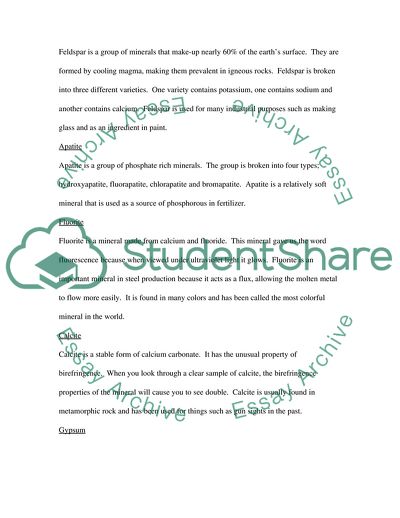Cite this document
(What Do You Know About Minerals Essay Example | Topics and Well Written Essays - 1250 words, n.d.)
What Do You Know About Minerals Essay Example | Topics and Well Written Essays - 1250 words. https://studentshare.org/physics/1764369-minerals-earths-interior-and-clouds
What Do You Know About Minerals Essay Example | Topics and Well Written Essays - 1250 words. https://studentshare.org/physics/1764369-minerals-earths-interior-and-clouds
(What Do You Know About Minerals Essay Example | Topics and Well Written Essays - 1250 Words)
What Do You Know About Minerals Essay Example | Topics and Well Written Essays - 1250 Words. https://studentshare.org/physics/1764369-minerals-earths-interior-and-clouds.
What Do You Know About Minerals Essay Example | Topics and Well Written Essays - 1250 Words. https://studentshare.org/physics/1764369-minerals-earths-interior-and-clouds.
“What Do You Know About Minerals Essay Example | Topics and Well Written Essays - 1250 Words”. https://studentshare.org/physics/1764369-minerals-earths-interior-and-clouds.


